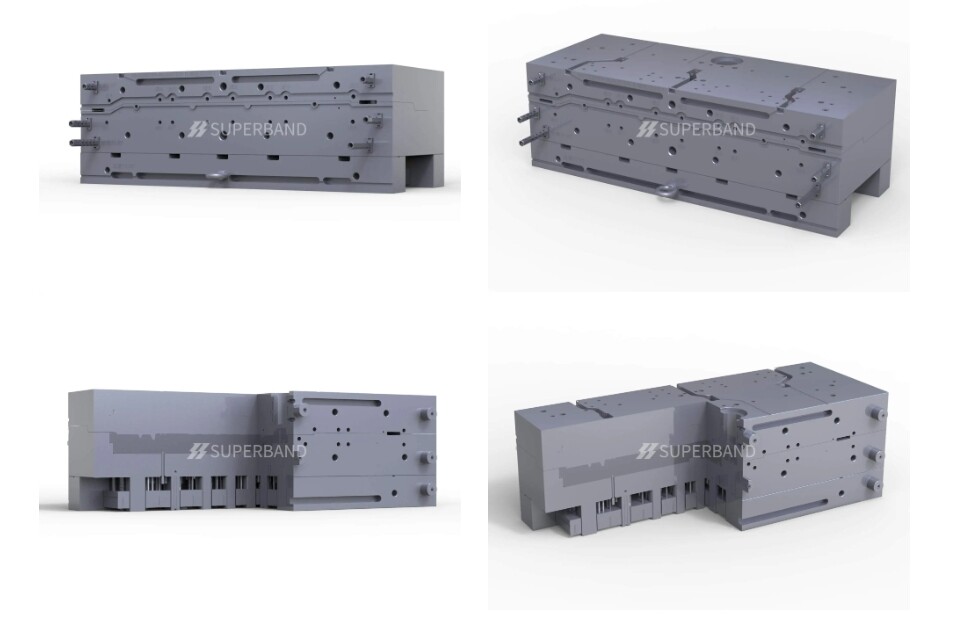2024-01-30
High pressure die casting is a widely utilized manufacturing process for producing highly precise and efficient complex metal parts. Central to this process is the die casting mold, which plays a critical role in shaping the final product. The basic process comprises molten metal being poured/injected into a steel mold and via high velocity, constant and intensifying pressure (in pressure die casting), and cooling the molten metal solidifies to form a solid casting.

High-pressure die casting (HPDC) is a widely used manufacturing process in various industries due to its numerous benefits. Here are some key advantages of high-pressure die casting:
● High Efficiency
● Cost-Effectiveness
● Complex Geometries
● High Precision
● Excellent Surface Finish
● Material Versatility
● Enhanced Mechanical Properties
● Reduced Tooling Costs
● Consistency and Reproducibility
● Environmental Benefits
From its high efficiency and cost-effectiveness to its ability to produce complex parts with excellent precision and surface finish, HPDC continues to play a vital role in modern manufacturing. As technology advances and new materials and techniques emerge, the advantages of high-pressure die casting are expected to further enhance its position as a leading manufacturing solution.
The choice of materials for high pressure die casting molds is paramount to ensure durability, thermal stability, and overall performance. Here are some common materials used in high pressure die casting molds:
Tool Steel: Tool steel is one of the most popular choices for high pressure die casting molds due to its excellent hardness, toughness, and wear resistance. Tool steels such as H13, D2, and P20 are frequently used in die casting molds because they can withstand the high pressures and temperatures involved in the process.
Hot Work Steel: Hot work steels are designed to perform under high temperatures, making them ideal for applications like die casting molds. These steels maintain their mechanical properties even at elevated temperatures, ensuring dimensional stability and prolonged tool life. Examples include H11 and H12 steels.
Stainless Steel: Stainless steel is valued for its corrosion resistance and ability to withstand aggressive environments. While not as common as tool steel or hot work steel, certain grades of stainless steel, such as 420 and 440C, are suitable for die casting molds, especially when dealing with corrosive casting materials or environments.
Copper Alloys: Copper alloys like beryllium copper (CuBe) and copper-nickel-silicon (CuNiSi) offer high thermal conductivity, which is advantageous for rapidly dissipating heat from the mold surface. This helps in maintaining consistent casting temperatures and reducing cycle times. However, copper alloys may require specialized surface treatments to prevent soldering or erosion during casting.
Aluminum: Renowned for its lightweight and excellent thermal conductivity, aluminum emerges as a popular choice for HPDC molds. Its low melting point allows for rapid heat dissipation, facilitating faster cycle times and enhanced productivity. Moreover, aluminum's superior machinability simplifies mold fabrication and maintenance, contributing to cost-effectiveness over the long term.
Nickel-Based Alloys: Nickel-based alloys such as Inconel and Hastelloy exhibit exceptional corrosion resistance and high-temperature strength, making them suitable for die casting molds exposed to aggressive casting materials or operating conditions. These alloys maintain their mechanical properties at elevated temperatures, ensuring prolonged mold life and consistent part quality.
When selecting a high pressure die casting mold material for an industrial application, it is important to consider the application and choose the material that best suits your needs. Additionally, it is important to compare the material with other materials to determine which one is best suited for the job. By following these tips or consult with a professional, you can ensure that you select the right die casting mold material for your industrial application.
Regardless of the material chosen for die casting molds, proper maintenance and surface treatments are essential for maximizing tool life and performance. Routine maintenance, including cleaning, polishing, and reconditioning, helps prevent defects and prolongs mold lifespan.
In conclusion, the selection of materials for high pressure die casting molds is a critical decision that directly impacts the quality, efficiency, and cost-effectiveness of the manufacturing process. By understanding the properties and characteristics of various materials, manufacturers can choose the most suitable option for their specific application requirements, ensuring optimal performance and longevity of die casting molds.